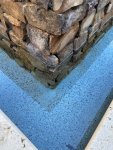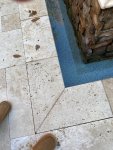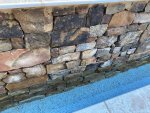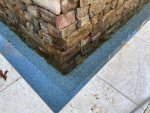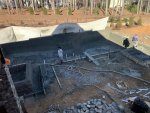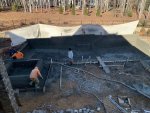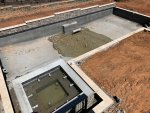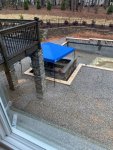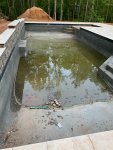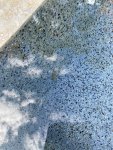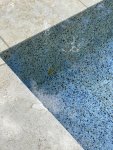Hi everyone from Raleigh NC,
I have some concerns with my pool build. Started at 1” water loss per day and about 1/2” now after leak company plugged some holes. Basic stuff they said and treated.
Question: is it a generally accepted practice to have any pool water ever touch non-plastered concrete in any way in that structure?
As you can see from the picture, the live stone around the raised hot tub area does not have the plaster like in our pool. They also did not use any water barrier of any kind or sealer. The builders did the live stone and then had the plaster company come in after that was done. I have some hunches and would love feedback.
I have some concerns with my pool build. Started at 1” water loss per day and about 1/2” now after leak company plugged some holes. Basic stuff they said and treated.
Question: is it a generally accepted practice to have any pool water ever touch non-plastered concrete in any way in that structure?
As you can see from the picture, the live stone around the raised hot tub area does not have the plaster like in our pool. They also did not use any water barrier of any kind or sealer. The builders did the live stone and then had the plaster company come in after that was done. I have some hunches and would love feedback.



